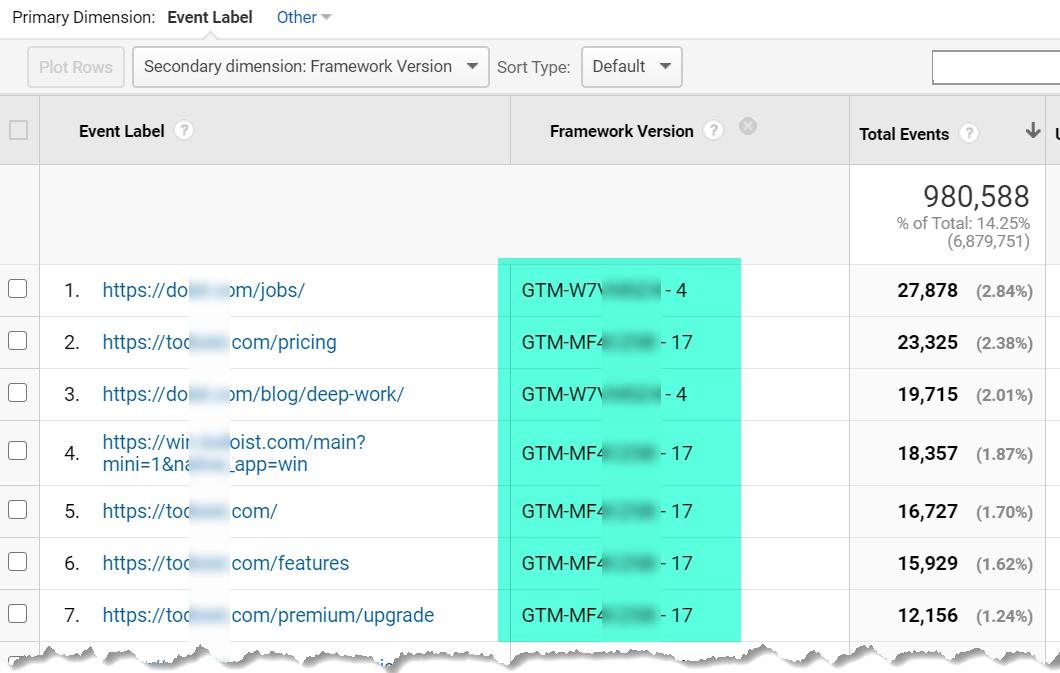Translating the Value of Second Dimension in Google Analytics: Everything About Its Value and Effect
In the realm of digital analytics, the utilization of secondary dimensions within Google Analytics offers as an essential device for discerning much deeper layers of data understandings. The value of second measurements exists in their capability to offer a nuanced view of user actions and communication with an internet site or system.
Understanding Secondary Measurements in Google Analytics
The understanding of second measurements in Google Analytics is crucial for gaining deeper insights right into customer behavior and site efficiency. While key dimensions give basic information points such as traffic resources and web page views, additional measurements enable a more nuanced analysis by giving additional context to these primary metrics. By including secondary dimensions, customers can sector and filter their data to discover patterns and fads that may not be right away apparent.

Introducing the Conveniences of Second Dimensions
Structure upon the fundamental understanding of additional dimensions in Google Analytics, discovering the benefits they provide discloses invaluable insights for improving data analysis and decision-making. By including additional measurements, users can dive much deeper right into their information, obtaining a more thorough view of user habits, content efficiency, and other crucial metrics. One of the main advantages is the ability to section information, enabling for an extra granular analysis of different dimensions such as traffic sources, tools, demographics, and extra. This segmentation allows customers to recognize patterns, patterns, and connections that may not appear when taking a look at information in aggregate.
Furthermore, secondary dimensions provide context to primary data, offering additional layers of info that can help in comprehending individual interactions and choices. This boosted understanding can guide strategic decision-making, bring about even more targeted advertising projects, internet site optimizations, and overall enhanced performance. In essence, additional dimensions function as a powerful device for opening deeper insights and making the most of the utility of Google Analytics for businesses and web site owners.
Leveraging Secondary Measurements for Enhanced Insights
By taking advantage of the power of secondary dimensions in Google Analytics, companies can discover deeper understandings that drive educated strategic and decision-making optimization efforts. Leveraging second measurements permits businesses to delve beyond surface-level data and acquire a more detailed understanding of individual habits, target market demographics, website traffic resources, and website efficiency. For instance, by incorporating primary dimensions like traffic resources with secondary dimensions such as geographic location or device group, organizations can determine which gadgets or areas are driving one of the most valuable website traffic to their website.
Moreover, additional measurements allow companies to section and analyze data better, aiding them recognize fads, patterns, and opportunities that may have or else gone unnoticed. By utilizing second dimensions, businesses can customize their advertising techniques, content, and customer experience to far better satisfy the demands and preferences of their target audience. Basically, leveraging secondary measurements in Google Analytics empowers companies to make data-driven choices that bring about enhanced performance, raised ROI, and lasting growth.

Impact of Additional Dimensions on Information Analysis
Enhancing data evaluation via the use of additional measurements in Google Analytics provides services with a deeper understanding of their online performance metrics. By incorporating secondary measurements, such as time of day, geographical place, or tool category, businesses can reveal beneficial insights that might have been overlooked with main measurements alone. This enhanced degree of granularity enables even more accurate segmentation of data, enabling services to recognize patterns, trends, and relationships that can drive tactical decision-making.

Maximizing Possible: Second Capacities Techniques
The tactical application of additional measurements in Google Analytics prolongs past boosting data evaluation; it includes crafting targeted strategies to open the full capacity of important insights for organization growth. By using secondary dimensions efficiently, businesses can dive deeper into their web site web traffic, customer habits, and advertising campaigns to extract actionable insights. One essential strategy is to integrate second dimensions with primary dimensions to acquire a detailed sight of user interactions. Matching the main measurement of 'source/medium' with secondary dimensions like 'landing web page' or 'gadget group' can disclose which channels are driving web traffic to particular pages or just how individual behavior varies throughout devices.
In addition, making use of second dimensions to segment information navigate to this website based upon customer demographics, habits, or innovation can aid services tailor their marketing efforts to specific target market sections. This targeted strategy can cause improved conversion prices, improved user experiences, and inevitably, increased ROI. By making the most of the possibility of additional measurements in Google Analytics, services can make informed choices, maximize their on-line visibility, and drive lasting development.
Conclusion
In verdict, secondary dimensions in Google Analytics play a vital role in giving deeper understandings and boosting data evaluation. By utilizing additional dimensions successfully, businesses can obtain a much more thorough understanding of individual actions and web site efficiency. Incorporating secondary dimensions right into data evaluation techniques can lead to more informed decision-making and enhanced general efficiency. It is crucial for businesses to utilize the power of additional measurements to maximize their possible and achieve greater success in their online undertakings (what is a “secondary dimension” in google analytics?).
While key dimensions give essential data factors such as web important link traffic resources and special info web page sights, second dimensions permit for an extra nuanced analysis by supplying additional context to these main metrics. By integrating primary measurements like traffic sources with second measurements such as geographic location or gadget group, companies can recognize which gadgets or regions are driving the most useful website traffic to their site.
By integrating secondary measurements, such as time of day, geographic location, or gadget group, companies can reveal valuable insights that might have been neglected with key measurements alone. One essential approach is to incorporate secondary dimensions with primary dimensions to acquire a detailed view of customer interactions. Combining the main measurement of 'source/medium' with additional dimensions like 'touchdown web page' or 'device category' can expose which networks are driving website traffic to specific web pages or just how individual habits varies throughout gadgets.